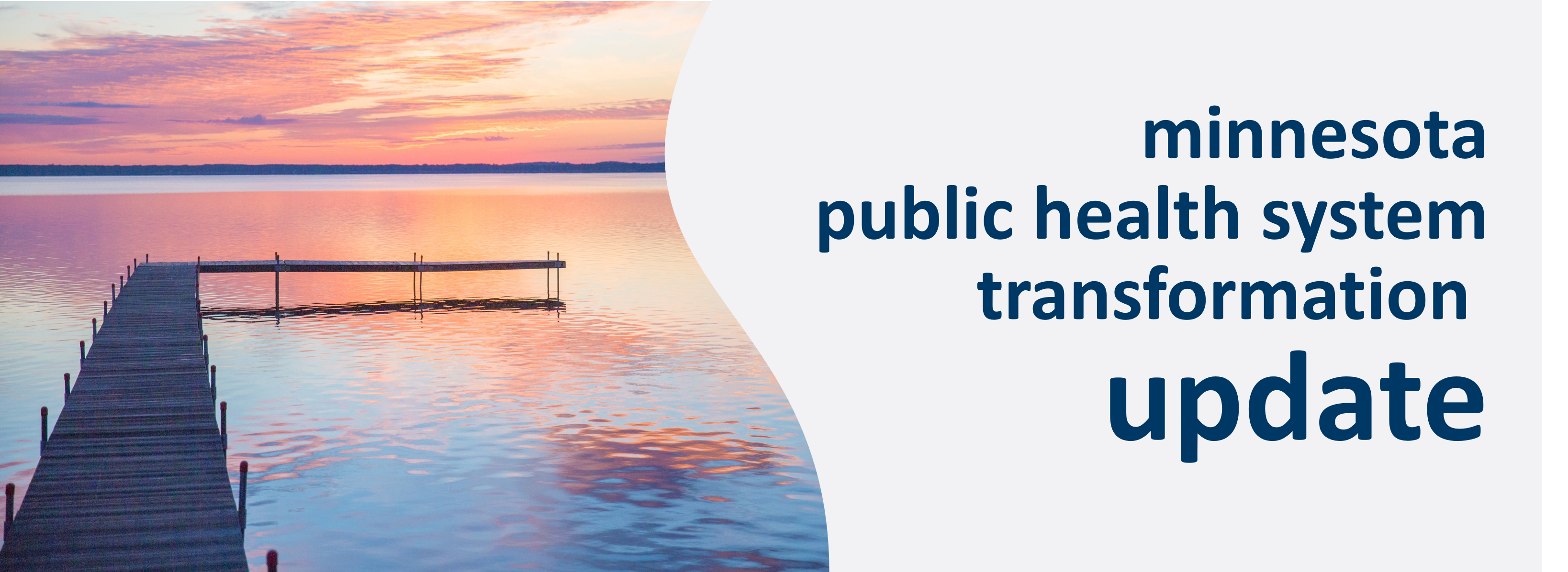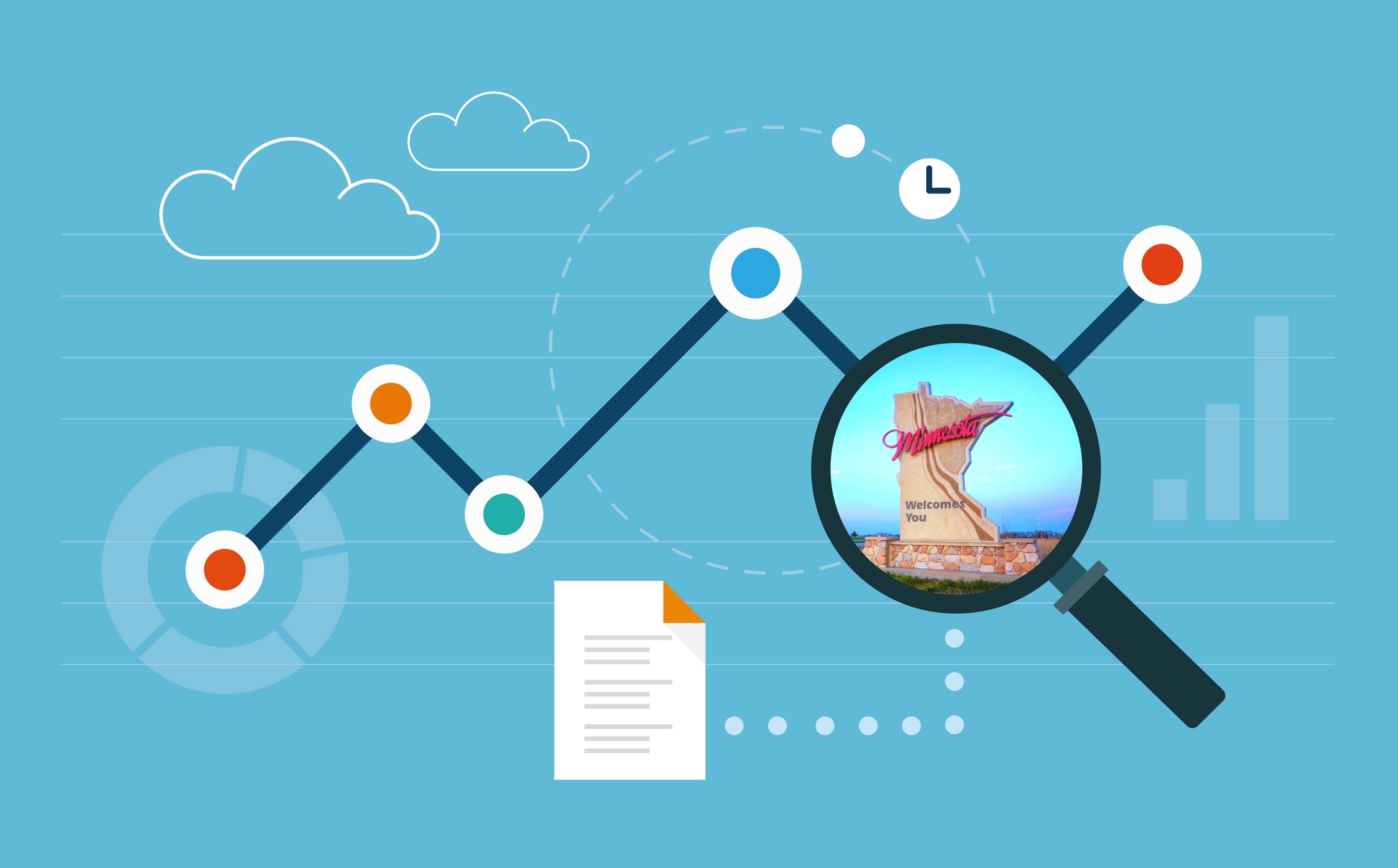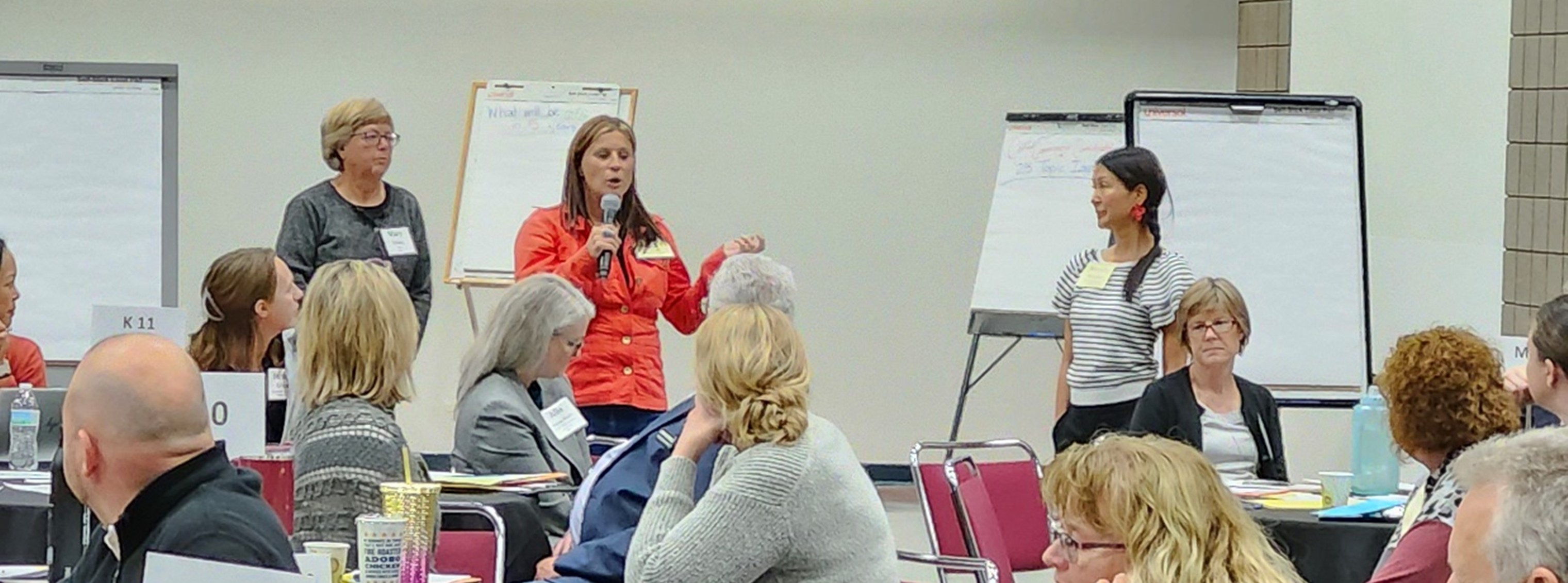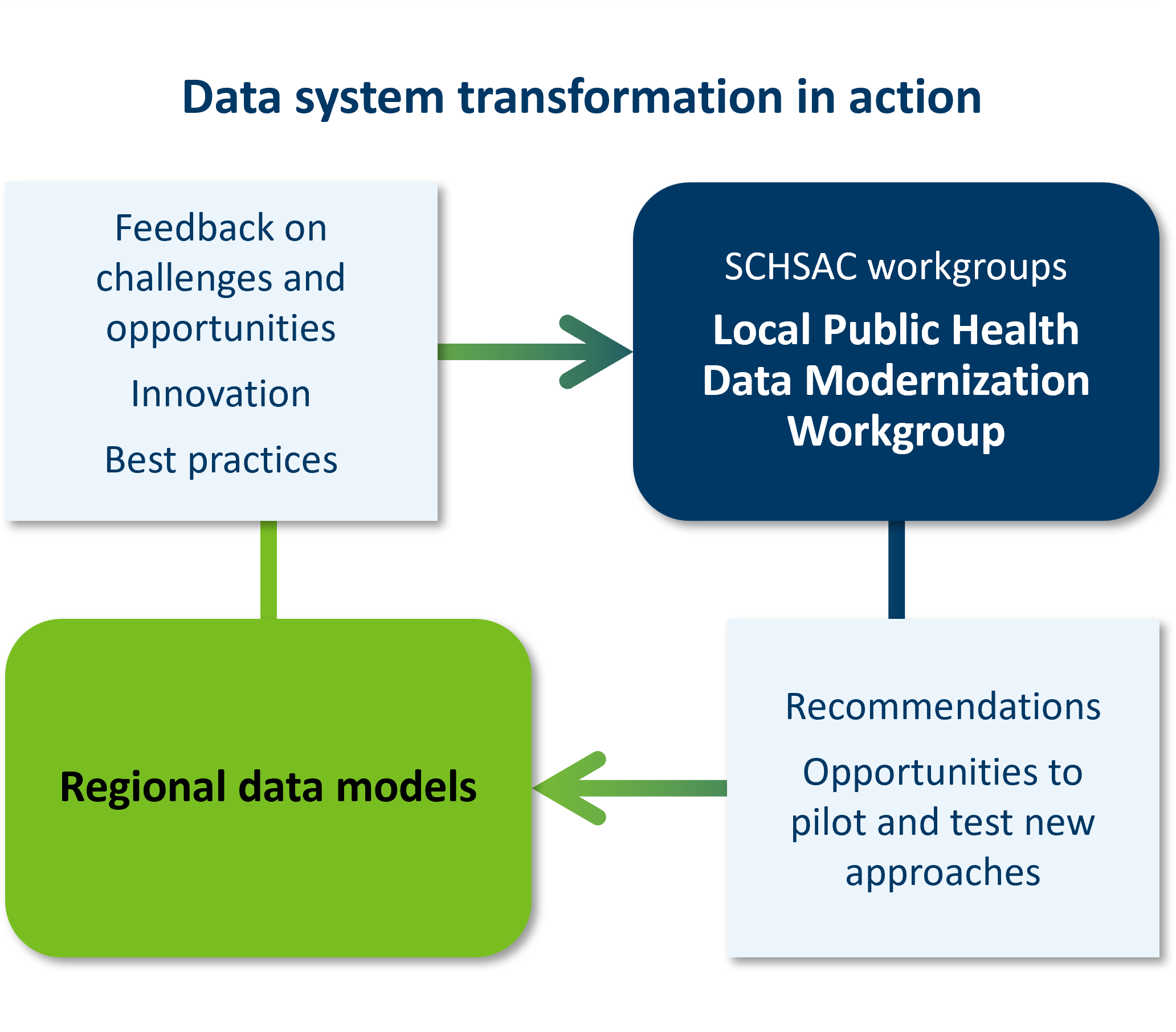Transforming Minnesota's Public Health System
- Home: System Transformation
- About This Work
- Framework of Foundational Responsibilities
- Definitions, Criteria, and Standards for Fulfillment
- Joint Leadership Team
- Minn. Infrastructure Fund and Local Innovation Projects
- Governance Groups and Communities of Practice
- Data Modernization
- Regional Data Models
- Tribal Public Health Capacity and Infrastructure
- FPHR Grant: Funding for Foundational Responsibilities
- Reports, Fact Sheets, Resources
- Newsletter
- Message Toolkit
Related Sites
Contact Info

Public Health System Transformation Update Newsletter
September 2025 | View all system transformation newsletters
Regional data models
Mending Minnesota's uneven patchwork of data capacity
This fall, Minnesota’s public health system will sustain two locally led regional models in the Southeast and Northwest that are already working together to build data capacity across their member health departments. In addition, other health departments will have the opportunity to join together and grow additional regional models to make sure that every local health department in every region, no matter how big or small, has access to timely population health data for their jurisdiction.

While it may not be possible for every health department to literally employ someone with capacity for data work , but every health department needs access to robust data capacity. Collaborating regionally on data through these models can help Minnesota’s public health system find the sweet spot between work that happens only locally and work that happens only through the Minnesota Department of Health.
“Imagine if public health departments could more nimbly work together across county and regional borders, finding economies of scale in cross-cutting work and being more effective with Minnesotans’ hard-earned dollars.” – 2025 report to the Minnesota Legislature on public health system development (PDF)
Minnesota’s regional data models will help provide the staffing, knowledge, expertise, skills, and necessary infrastructure to increase an entire region’s ability to access, collect, use, manage, and share population health data. These models will help local public health in Minnesota use data to identify and respond to health priorities more quickly and accurately, and reduce disparities in data capacity across Minnesota’s public health system. These models can help Minnesota’s public health system fill in the “patchwork” of capacity for foundational work that varies so widely, often shaped by a department’s population size and geography.
Each region’s model and structure may look different, depending on strengths, needs, and priorities of the partners involved. While participation in regional data models is not mandatory , the goal is to welcome every local public health jurisdiction that wants to participate.
Local public health jurisdictions will work together to determine who their partners are and what their region will look like; regional data model funding can support up to eight regions. Funding supporting regional data models is ongoing and is not competitive.
A people-centered solution, not just a technology fix
If data and partnership top our list of public health must-haves, Minnesota’s regional data models reflect a commitment to both. The regional models are built on people and relationships, not technology—they’re not just a new EHR or documentation system. (A regional data model may include a dashboard to share data across the region, but a dashboard alone is not a regional data model without the deep relationships and partnership behind it.)

The models support shared or collaborative infrastructure for staffing, knowledge, expertise, skills, and relationships that local health departments need to access, collect, use, manage, and share data to inform public health decision-making.
“We are implementing a system that makes assessment and surveillance for smaller health departments easier with access to real-time local data in a cost-effective way through collaboration. With this, we are creating capacity for smaller health departments to have easy-access, local data, freeing up time to develop and implement strategies promoting public health. We are changing the system of how assessment and surveillance has traditionally been provided to reduce the burden on the state health department and build off already established local relationships.” – Southeast Minnesota regional data model participant, 2025.

Regional data models are grounded in collaboration, conversation, and co-creation. Your colleagues helping steward the regional data models (at LPHA, MDH, and SCHSAC) are committed to moving toward regional models in a manner that prioritizes dialogue and listening. Regional data models will be locally led, locally planned, locally implemented, and locally evaluated.
“Participants in the project report increased engagement and commitment due to early and continuous involvement in decisions and decision-making processes, resulting in strengthened trust across the community health boards and among neighboring counties.” – Northwest 8 Public Health Hub participant, 2025.
Assessment and surveillance is a foundational capability—that is, one of the key, cross-cutting groups of work that all public health departments in Minnesota should have access to in some form. When a jurisdiction has strong capacity in foundational responsibilities like assessment and surveillance, it enhances all of the department’s other work, no matter the topic, area, or population.